Jitlada was the talk of Thai Town for almost two decades. The restaurant suffered from a culinary coma in the years leading up to March 2006, when Chef Tui Sungkamee and younger sister Jazz Singsanong took over Jitlada. Incredibly, it required a Chicago blogger named Erik M. to school locals about the reinvigorated restaurant’s shift to rarely-seen southern Thai cuisine. Eric took the initiative to translate the menu to English, which allowed mainstream press to catch on to Jitlada. Before the regime change, most tables were fair game at any time of day or night at Jitlada. No longer.
Jazz said that her brother cooked for a dozen siblings in southern Thailand. He had a restaurant on Pattaya beach before coming to America. He makes everything fresh, and uses only the best ingredients. She said it might cost $60 for a bag of lemongrass and $3 for a single mango in season, but her brother feels it’s necessary to be able to produce superior Thai food. He makes curries fresh every night, sometimes staying until 3 a.m. Jazz often questions why he doesn’t just make the curries in the morning, but he swears it makes a difference. Jazz said he also makes as many as ten trips a day to local (and not so local) markets. The family also owns a second Thai restaurant in Westwood called Emporium, but Jazz concedes that it’s “not authentic.”
Jitlada featured plenty of traditional touches, including framed fabric depicting elephants, which are revered in Thailand due to their power, usefulness and historical connection to the monarchy. Even the tablecloths incorporated elephants. Dominating the eastern wall of the restaurant was this meticulously detailed wooden diorama depicting the Hindu tale of Rama slaying the giant Mahodara.
The bulk of the menu is devoted to standard American Thai fare, but the back page featured 50 dishes on the “Southern Thai Menu Translation.” There were so many options that sounded good, and there were only three of us (eating our second lunch of the day), so our eyes were infinitely bigger than our stomachs. I was certainly tempted by the spicy curry with beef and pickled cassia buds, spicy curry with frog legs and santol fruit, spicy fish kidney curry with grilled fish, and sour soup with turmeric, mullet fish and “nipa” palm vinegar. Santol fruit? Cassia buds? Fish kidney curry? We were clearly in for a serious meal.
Khao Yam “Songkhia” was a rice salad in the style of Songkhia province, with assorted vegetables and a sweet sauce (naan budu). White rice was mixed with toasted coconut, dried shrimp, lemongrass and Kaffir lime leaves, plus sweet strips of pineapple, sprouts, diced scallions, sliced cucumber and julienned carrots. Mixed together, the dish was colorful and subtly sweet, but could have used a little more complexity to really make it pop, maybe a citrus or sour note.
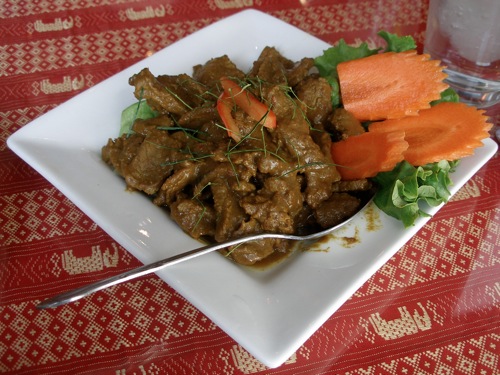
Khua Kling “Phat Lung” was a spicy, turmeric-flavored “dry” curry with beef. The tender slices of beef were seasoned liberally with turmeric, so the curry took on a yellowish brown hue. The “dry” label was a misnomer, since the flavorful curry was plenty wet. It was topped with a raw red pepper strips and some shaved scallions.
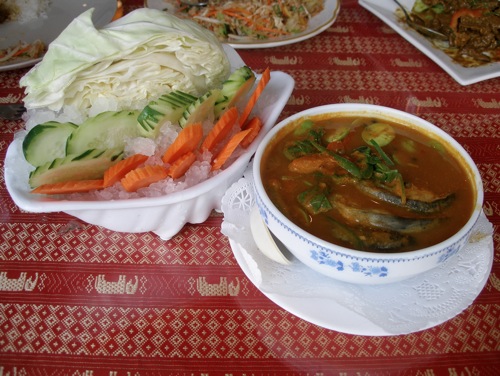
Kaeng Paa Plaa Duk Luuk Taw was a spicy, turmeric-seasoned “wild” curry with catfish and sator beans. Sator beans look a lot like lima beans, but tasted bitter. According to the Asia Food glossary, sator beans also go by “twisted cluster bean” and “stink bean,” and are popular not only in southern Thailand, but also in Burma, Malaysia and Indonesia. The menu specified that there was no coconut milk used for this dish, which is one of the few ingredients that could have tamed the chilies. To cool our mouths, Jazz brought an icy dish of raw carrots, cucumbers and cabbage.
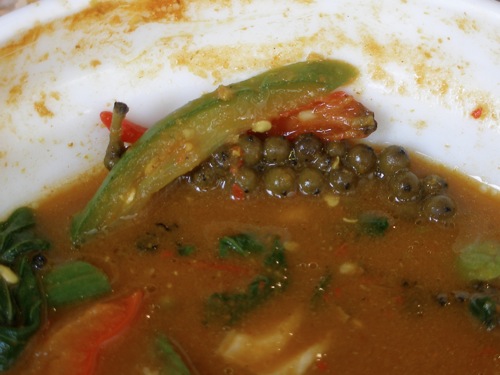
This close-up shows the menacing combination of peppercorn cluster bombs and both red and green chile peppers that hadn’t been cleaned of seeds or veins, a recipe for ferocious spice. Upon first bite, my throat started to tighten and beads of sweat formed on my brow, internal warning signs to stop consuming the curry. Thankfully Chef Sungkamee didn’t use spice for spiciness’ sake. There were plenty of flavors, and after working around the tiny bones on the catfish, the fish was really tender and fresh, so no matter the pain, I couldn’t stop eating.
My first experience was successful enough to warrant a return trip less than two weeks later. The second meal was even more impressive.
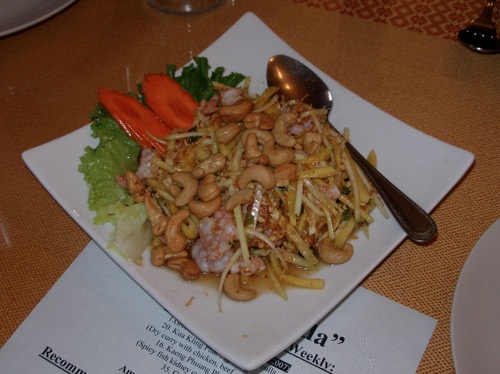
Jazz had several recommendations, and given her conviction, we couldn’t resist. Tam Som Muang “Pak Nang” paid immediate dividends. The fabulous salad was perfectly balanced, with sweet mango strips, crunchy cashews, firm shrimp, thinly sliced purple onions, and spice from diced garlic.
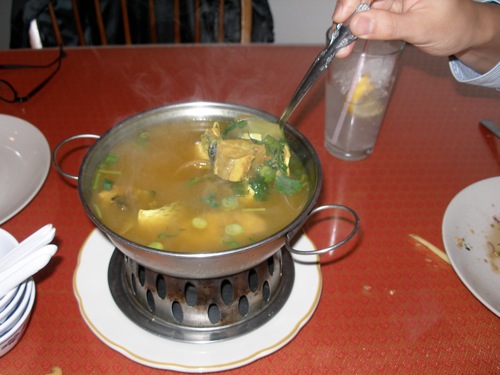
Plaa Bawk Tom Naam Som Jaak was more exotic. The soup’s powerfully sour yellow broth was seasoned with turmeric and nipa palm vinegar and floating with scallions and cilantro. The chunks of mullet were bony and pungent, with each cross section yielding tiny nuggets of meat that were loaded with pin-like bones. At the only point during our dinner, the dish wasn’t worth the work.
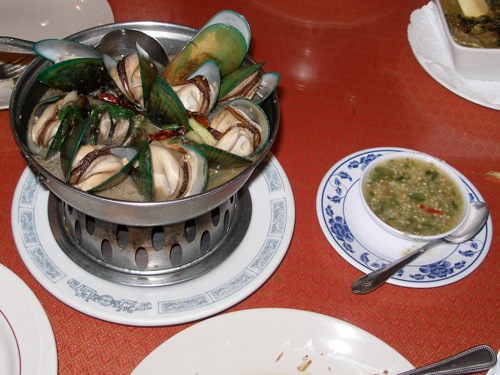
On my first visit, Jazz was proud that LA Weekly critic Jonathan Gold ordered steamed mussels during 17 straight meals, culminating in a glowing review. The green lip mussels were indeed incredible, submerged in a lemongrass broth with whole chilies and Thai basil. The bivalves were massive, easily two inches across. Chef Sungkamee cooked them masterfully, until sweet and supple. Not that the mussels needed anything, but we spooned on a sauce of minced garlic and green chilies.
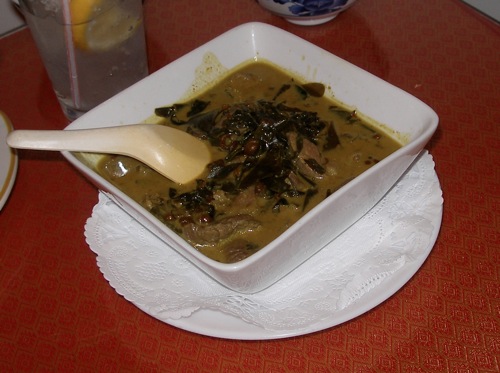
Kaeng Neua Khii-Lek was another fascinating dish, a spicy curry with sliced beef, pickled cassia buds and cassia leaves. The cassia buds are known to feature cinnamon like flavor. The tender beef certainly wasn’t Prime, but it soaked up the complex curry to good effect.
We weren’t thinking of ordering a vegetable, but Jazz thought watercress would bring balance to our meal. Jazz also called the dish morning glory, and it was simply prepared with soy sauce, minced garlic and whole chilies. It turned out to be a curious selection, since it was something we could have found at plenty of local Chinese restaurants. Still, the watercress was well prepared.
After two meals at Jitlada, it’s clear why Erik M. went to the trouble to translate Chef Sungkamee’s menu into English. He was doing Angelenos a public service.


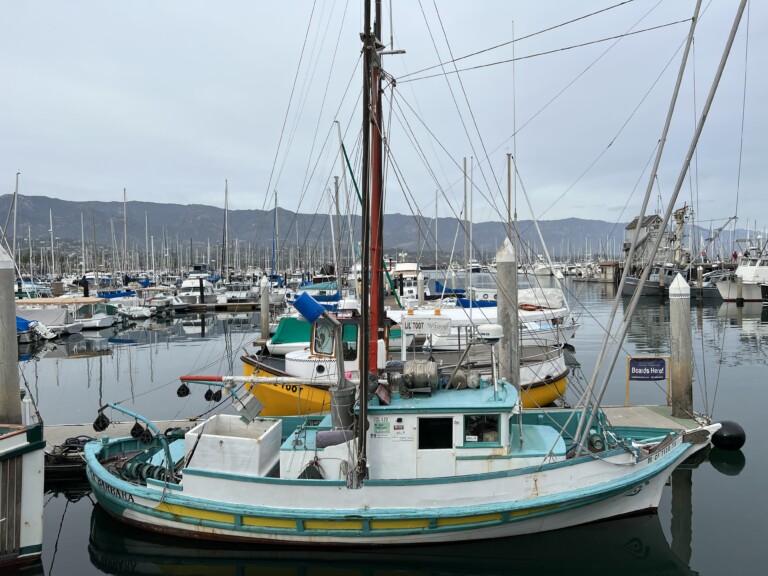






Blog Comments
Jitlada’s Beloved Chef Tui Sungkamee Has Died – Venus Club
October 19, 2017 at 3:11 PM
[…] coming to America, Sungkamee had a restaurant in Pattaya Beach in Southern Thailand. According to a piece in FoodGPS, he would only use the best, freshest ingredients, paying maximum dollar for things like fresh […]
A Reunion of Scoville Proportions: Jitlada, a year later, Hollywood | sinosoul.com
March 12, 2009 at 1:36 AM
[…] Buzz on Jitlada (tho TB doesn’t really DO spicy food) Potatototamo does the chicken version FoodGPS takes 2 trips to Jitlada last Jan It got love from Girl on Girl Action as early as July of ‘07 And of course Pat of Eating LA […]
SinoSoul
March 12, 2009 at 1:13 AM
that’s.. Erik w/ a “k”. just sayin’ =)
Joshua Lurie
March 12, 2009 at 8:23 AM
Thanks for letting me know. I changed it to Erik.